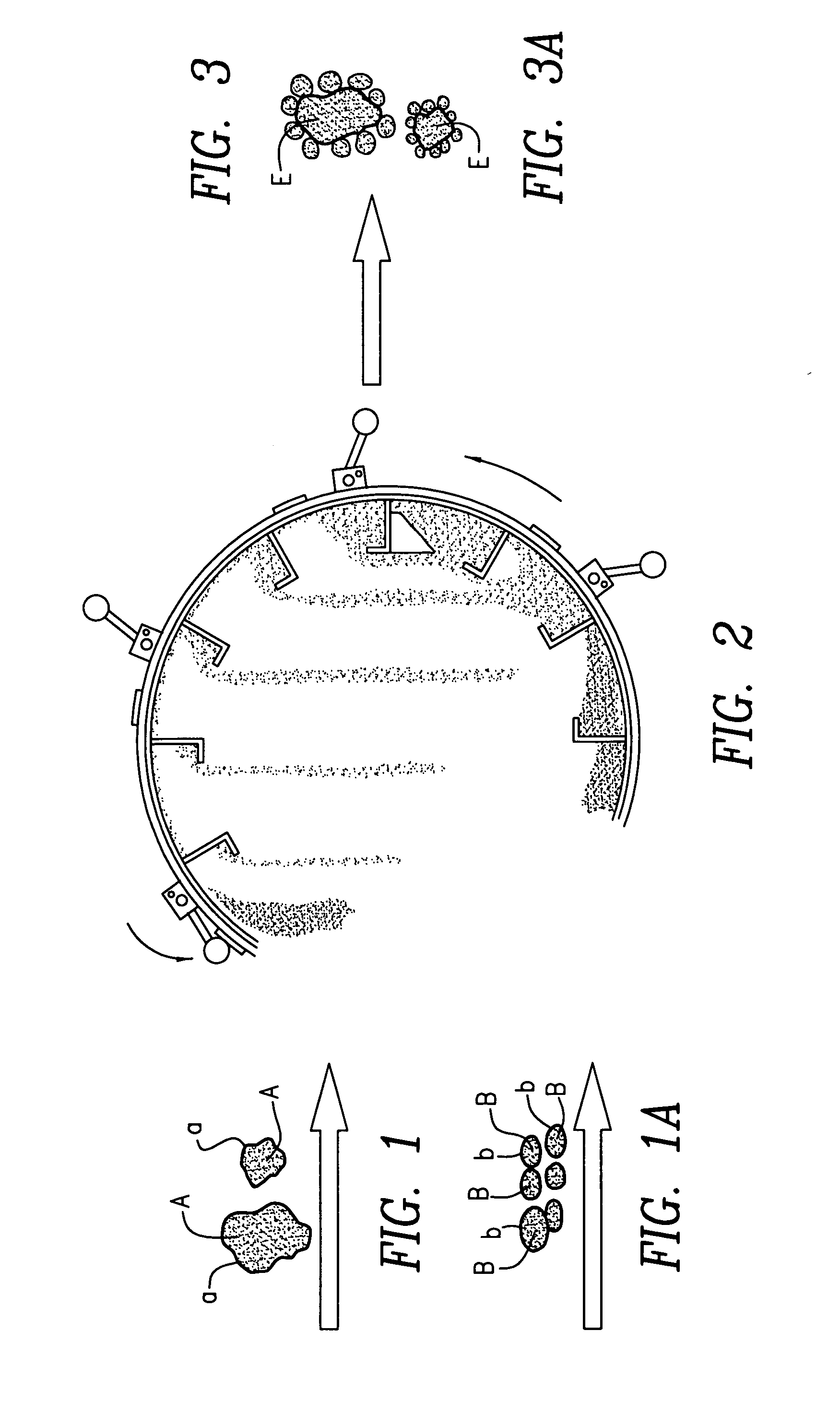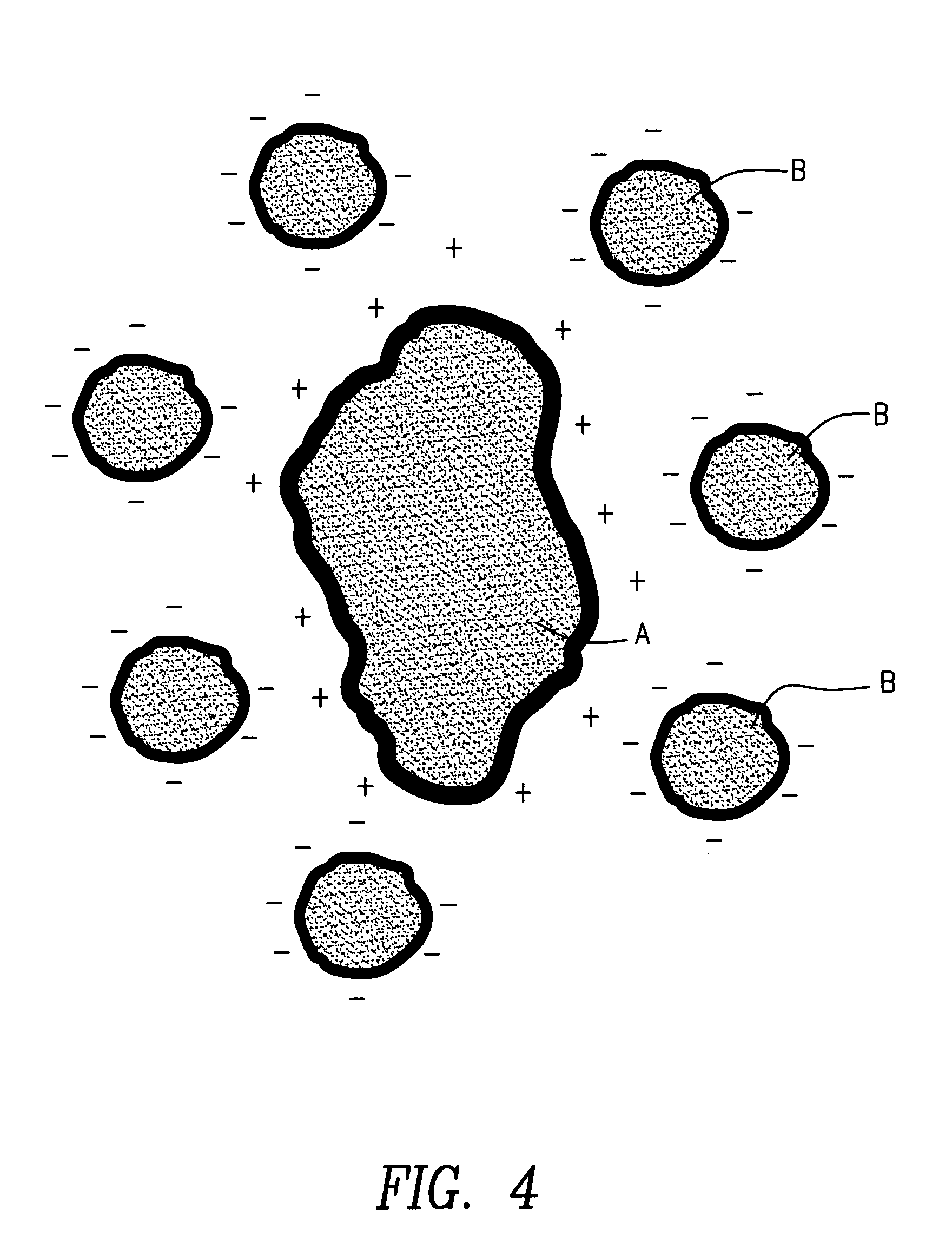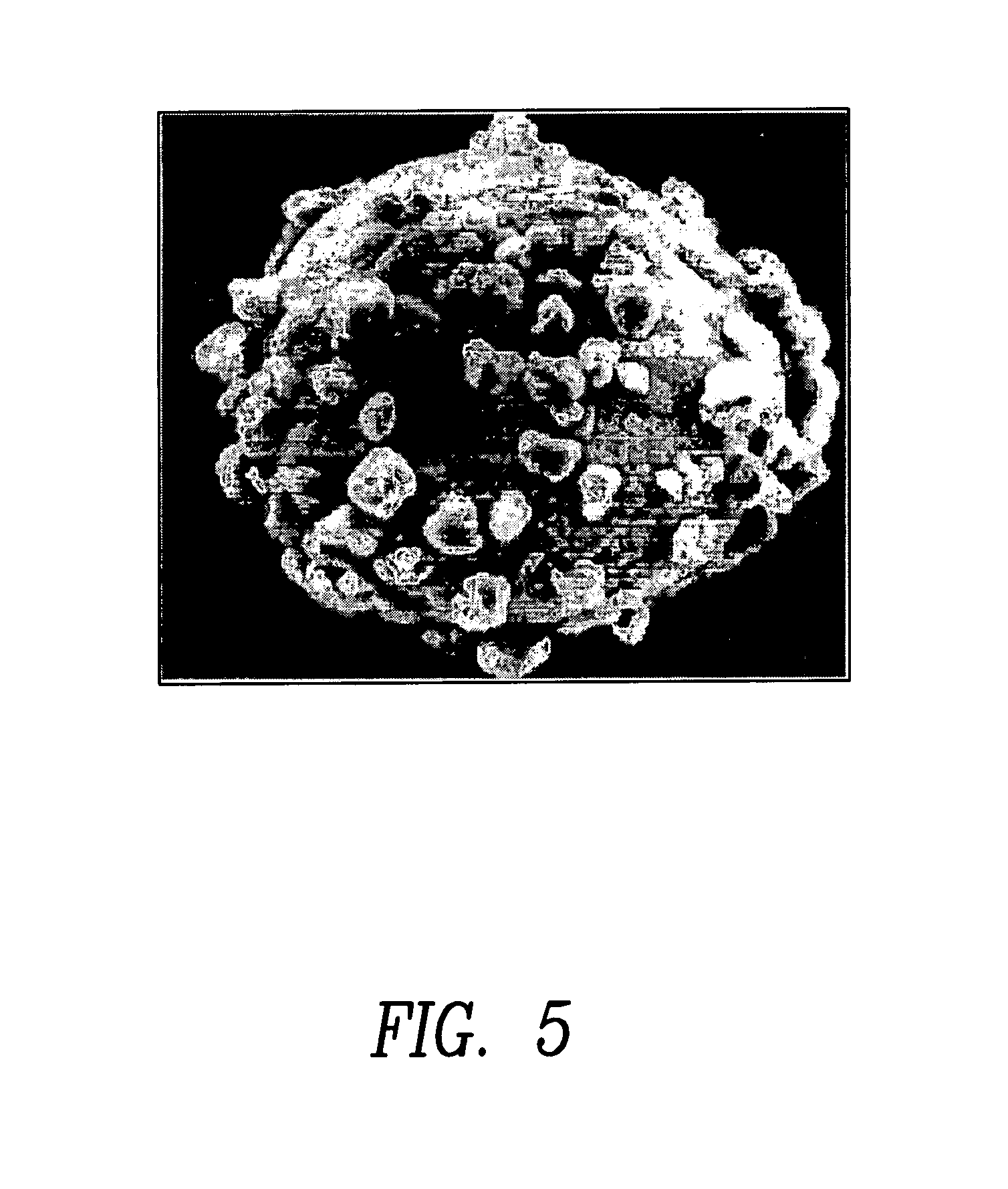Ordered particle structures and methods of making same
a technology of ordered mixture and particle structure, which is applied in the direction of fuels, weaving, explosives, etc., can solve the problems of reducing the dissolution rate, reducing the interaction force between, and no prior art mechanism that yields ordered adhesion, etc., and achieves the effect of enhancing the flow properties and cost effectiv
- Summary
- Abstract
- Description
- Claims
- Application Information
AI Technical Summary
Benefits of technology
Problems solved by technology
Method used
Image
Examples
example 2
[0097] Particle A is acetaminophen and B is powdered poly(vinyl acetate). The oppositely charged polymer particles surround and agglomerate on the drug. The formulation is employed to modulate the pharmacological release of the active drug.
[0098] The advantages of triboelectric clustering according to the present invention are that no viscous liquid binder is required, A and B are in close proximity, the combined powders A and B are flowable and there is a degree of control of the proportions of B to A (“stoichiometry”).
Magnetic Clustering
[0099] As is well known, a collection of iron particles can be magnetized and will adhere to one another. This is an unstructured array of one type of particle. Typically, the powder becomes an agglomerate and does not flow. This is undesirable for the present invention in which a flowable powder is preferred. Magnetic particles with permanent magnetic moments (ferrites, iron powder, etc.) attract one another indiscriminantly. To overcome this,...
example 1
[0102]“A” is a 100 μm diameter particle of barium ferrite. “B” is an organic polymer containing or coated with numerous nanoparticles of SPM ferrous ferrite, Fe3O4.
[0103] The barium ferrite is premagnetized, and thus retains a remanent magnetism. This is the attractor for particles of B which cluster around the A particle, held by magnetostatic forces.
[0104] If A is not an intrinsically magnetic material, it can be coated with a layer of attached material containing a ferrimagnet such as barium ferrite.
[0105] Magnetic clustering in accordance with the foregoing method can be used to combine A and B into a dry flowable composite suitable for the manufacture of many materials including energetics and explosives.
Chemical Reaction or Fusion
[0106] Now referring to FIG. 7, clustering may be achieved by heating a charge of different sized particles A and B and polymer D above the glass transition temperature of the coated polymer to form fusion points 10 between particles. Alternativ...
experiment 1
[0159] Now referring to FIGS. 14A and 14B SEMs of uncoated KCl (about 200 μm) show cubic crystals with surface defects. Now referring to FIGS. 14C and 14D SEM photographs of uncoated dechlorane (about 10 μm) show particles of irregular shape and size. Now referring to FIGS. 14E and 14F, particle size distributions for dechlorane and pure KCl are shown. The pure KCl has a mean of 284 μm.
[0160] The binder employed in these experiments was Smooth-Cast 327™, a two component system with an A:B mixed ratio of 1:1 pbv. The shrinkage of Smooth-Cast 327™ is 0.35% with a specific gravity of equal volume mixture A:B of 1.60 g / cc. The viscosity of the Smooth-Cast 327™ mixture increases with time. Now referring to FIG. 14G a graphical representation of the changes of viscosity with time for Smooth-Cast 327™ is disclosed.
[0161] Employing the SPA method of the present invention, a particle mixture of KCl and Dechlorane Plus was coated. 240 g of KCl was preblended with 3 ml of equal volume of A a...
PUM
 Login to View More
Login to View More Abstract
Description
Claims
Application Information
 Login to View More
Login to View More - R&D
- Intellectual Property
- Life Sciences
- Materials
- Tech Scout
- Unparalleled Data Quality
- Higher Quality Content
- 60% Fewer Hallucinations
Browse by: Latest US Patents, China's latest patents, Technical Efficacy Thesaurus, Application Domain, Technology Topic, Popular Technical Reports.
© 2025 PatSnap. All rights reserved.Legal|Privacy policy|Modern Slavery Act Transparency Statement|Sitemap|About US| Contact US: help@patsnap.com



